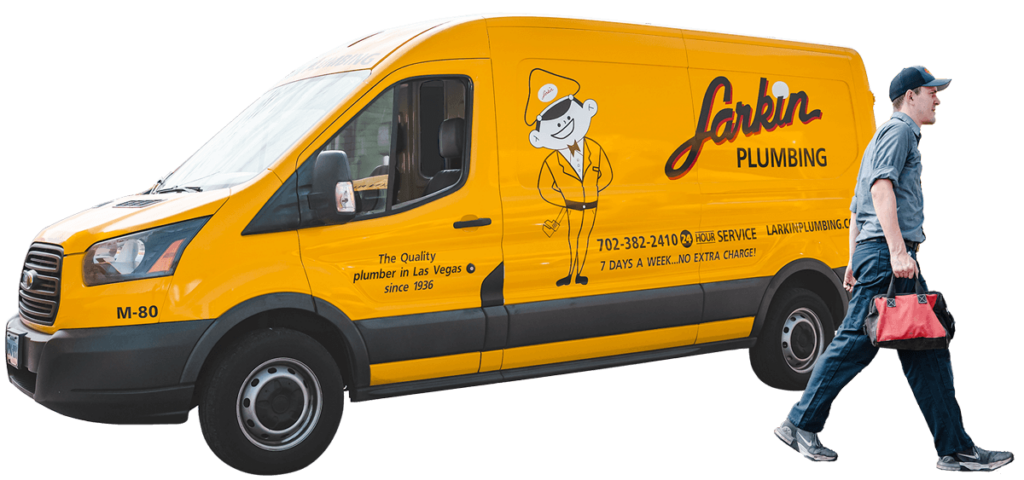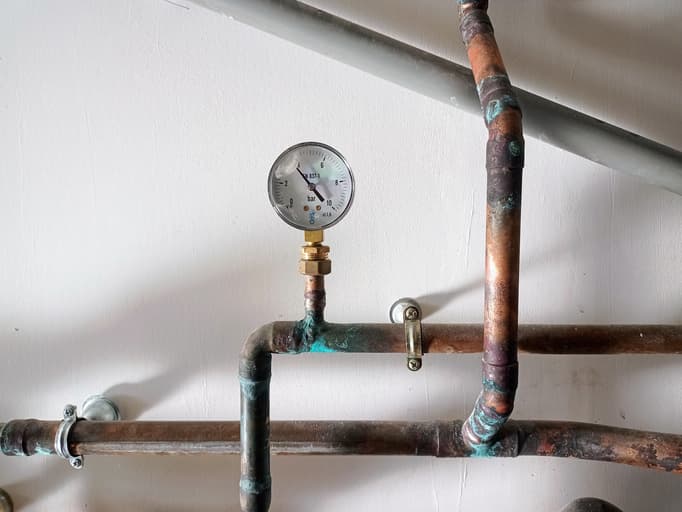
Indoor plumbing as we know it has not been around as long as you might think. Modern plumbing took many centuries to evolve and develop. In the last 100 years, several advances have influenced and shaped residential plumbing as we know it today.
When Was Indoor Plumbing Invented?
The fundamental advances in indoor plumbing did not occur until around the 1930s, when the federal government created the first set of standardized building and plumbing codes¹. Once these codes were adopted, advances in modern plumbing began to take shape.
Indoor Plumbing: The History of Plumbing
However, to find out when indoor plumbing was invented, we have to travel back to Ancient India and Pakistan to around 3500 BC. It is here we find the first water pipes² connected to homes.
Back then, people’s homes were connected to a central well, where they could draw water into each home through a hand pump. This ancient civilization also had a series of sewer lines for wastewater that directed water into a central sewer system.
When Were the First Metal Pipes Invented?
The next significant advance in plumbing occurred in Ancient Egypt in 2500 BC. The Egyptians were the first to use copper to create copper plumbing lines³. They used these pipes to regulate water flow from the Nile River for irrigation. Although, royalty did have the luxury of copper plumbing in the palace and their pyramids.
When Was the First Toilet Invented?
The first toilet was discovered in Crete in Greece and dates back to between 1700 and 1500 BC. It was found in the queen’s bathroom, which was flushed by pouring water into the toilet using rainwater or used bathwater. A terra-cotta sewer line was connected to the toilet that drained the waste into a nearby river.
When Was Running Water Invented?
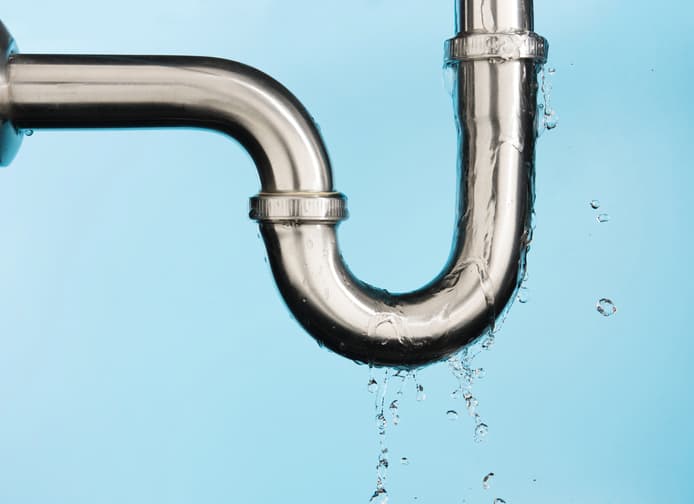
The Roman Empire developed one of the most extensive plumbing and sewer systems of its time between 500 BC and 476 AD. Aqueducts carried water into the city, where it was stored and directed through a series of underground plumbing to fountains, baths, and toilets. You could even find hot and cold water and a sewer system installed in wealthy Roman homes.
Who Invented the Flushing Toilet?
In 1596, Sir John Harrington invented the first flushing toilet in his home. Following a visit from his godmother, Queen Elizabeth I, she commissioned him to build a toilet at Richmond Palace. Because of his invention, we use the bathroom nickname “John” to this day. However, it had to be manually refilled before it could be flushed.
When Was the Shower Invented?
A mechanical shower was invented in 1767 in England. However, the device required pumping water up to a tank, pulling a handle to release it, and then reusing the water. Not too many people were keen on using recycled shower water. The modern shower as we know it would have to wait until the invention of the water heater.
Who Was the Inventor of the First Flushable Toilet?
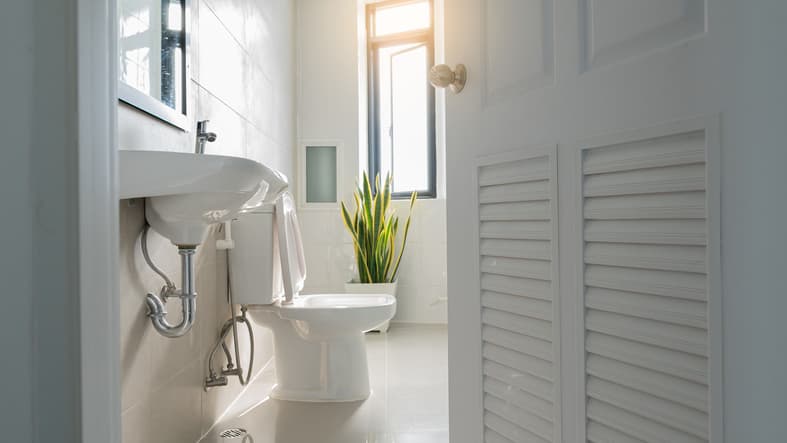
The modern flushable toilet was invented in 1775 by Alexander Cumming in Scotland. His invention included the “S-trap” we still use to this day to prevent waste gasses from back flowing into the toilet. It also was the first toilet connected to a water line so it could refill once it was flushed.
When Did Indoor Plumbing Become More Common in the U.S.?
Before the mid-1800s, indoor plumbing was a luxury that only kings, queens, and the wealthy enjoyed. Yet, things were about to change when Philadelphia became the first city to replace wooden pipes with cart-iron plumbing lines in 1815. Philadelphia was also the first city to have a significant enough waterworks organization to pump water into paying customers’ homes.
Toilets in Hotels
Another significant development was when Isaiah Rogers had eight indoor toilets installed at the Tremont Hotel in Boston in 1829, making it the first hotel to have indoor commercial plumbing. Then, the White House got indoor plumbing in 1833, but just on the ground floor.
Waterworks and Reservoirs
The mid-1800s saw other major cities creating waterworks and municipal reservoirs making indoor plumbing more accessible. Chicago was the first city in the county to develop a comprehensive sewer system to deliver water to thousands of houses.
Porcelain Toilets
Another major advance in modern plumbing occurred in 1870, when the first porcelain toilet was created. The new toilet was easier to install, allowing more people to have flushing toilets in their homes.
Need help fixing common plumbing issues in your home or business? Call the plumbing experts at Larkin Plumbing today.
When Were Water Heaters Invented?
Water heaters were the next significant advance in modern indoor plumbing. They were invented by Edwin Ruud in Philadelphia in 1889 and featured a storage tank that kept the water hot. It was not long before water heaters grew in popularity.
When Did Indoor Plumbing Become Standard?
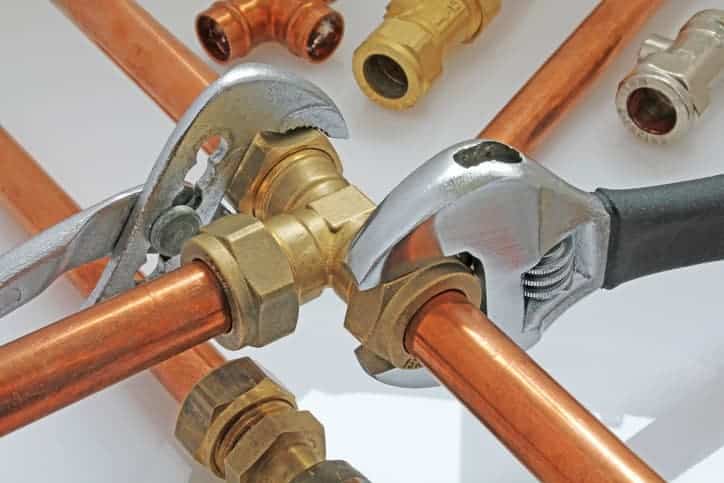
Even with the latest plumbing advances of the late 1800s, only about half the homes in the United States had indoor plumbing by 1940. After the federal government passed standardized building and plumbing codes, things began to change.
By the early 1950s, all new homes were built with indoor residential plumbing. During this time, modern showers also became more common in households.
Indoor Plumbing in the 21st Century
Over the centuries, the development of indoor plumbing resulted in advances in science, technology, and civilizations. Originally, indoor plumbing was something only royalty and the wealthy enjoyed. Fortunately, new inventions and the development of new plumbing systems allowed residential plumbing to become standard in every home.
Modern plumbing has only been around for about 70 to 80 years. Today, indoor plumbing continues to evolve and advance, focusing on water conservation and energy conservation. For instance, two modern plumbing inventions are low-flush toilets and tankless water heaters.
Even with modern plumbing systems, you can still have plumbing problems. When you experience clogs, leaks, or other issues, contact our experienced plumbers for help keep things moving smoothly.
Sources:
¹National Standards Plumbing Codes. IAPMO. Codes and Standards Development. Retrieved 7 June 2022.
²How Plumbing Happened. Project Archeology. Retrieved 7 June 2022.³Zollinger, L. 27 Events That Shaped Modern Plumbing. Ivey Engineering Inc. Retrieved 7 June 2022.

